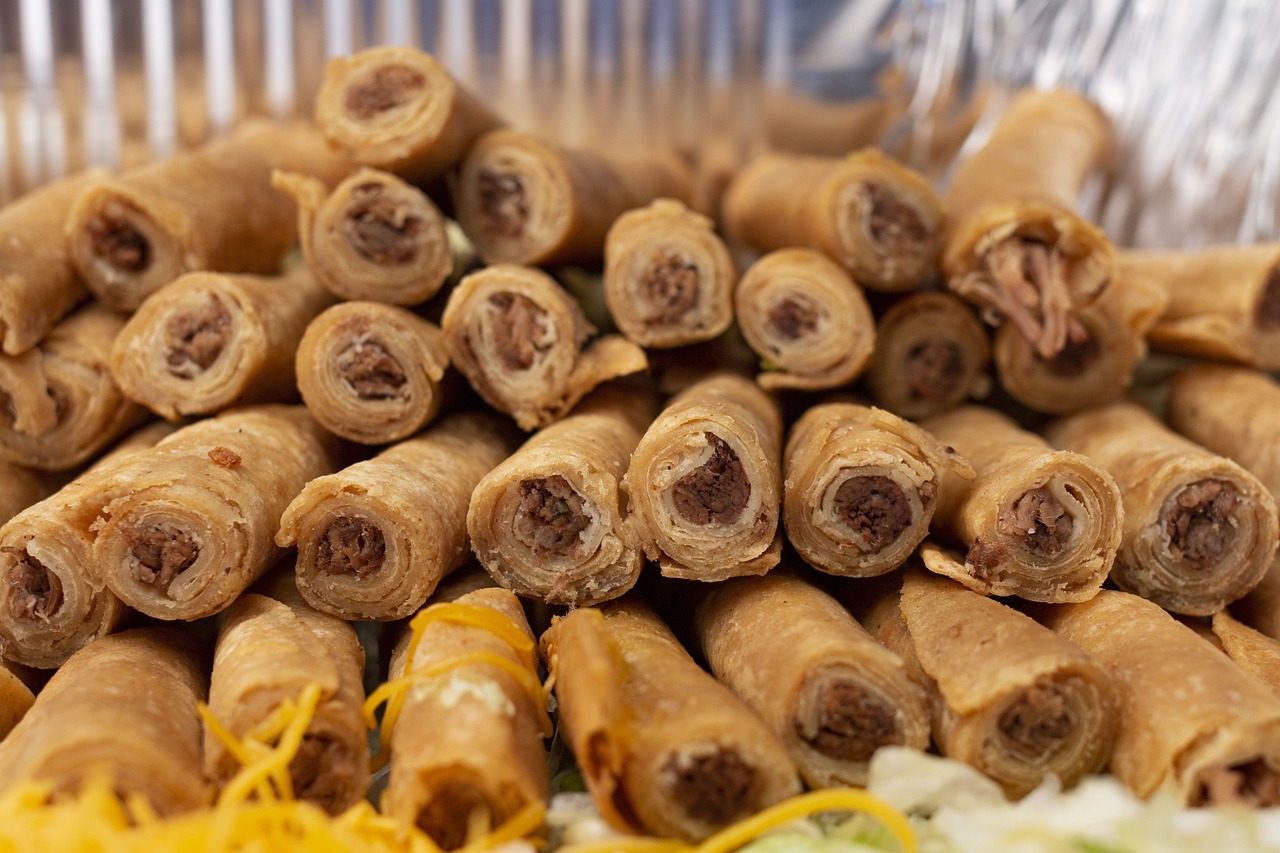Mexican Pozole Soup

When it comes to Mexican cuisine, one dish that stands out for its rich and comforting flavors is Pozole soup. This traditional stew, dating back to ancient Aztec culture, has evolved over time to become a beloved dish in Mexican households and celebrations. Made with hominy, tender meat, and a blend of aromatic spices, Pozole is a true explosion of taste and tradition.
Imagine a steaming bowl of Pozole, filled with hearty hominy kernels and succulent pork or chicken, simmering in a flavorful broth infused with the warmth of Mexican spices. Each spoonful is a surprise of textures and flavors, from the tender meat to the chewy hominy, creating a symphony of tastes that dance on your palate.
As you delve into the history of Pozole, you uncover its roots in ancient Aztec rituals, where it was considered a sacred dish enjoyed during special ceremonies. Over time, Pozole transformed into a staple in Mexican cuisine, adapting to regional preferences and becoming a symbol of Mexican culinary heritage.
Exploring the ingredients and variations of Pozole opens up a world of possibilities. While the classic recipe calls for hominy, pork or chicken, and traditional spices like oregano and chili peppers, regional variations introduce unique twists with ingredients such as avocado, radishes, and even seafood.
Preparing Pozole is a labor of love, requiring patience and attention to detail. From simmering the meat to perfection to adding the hominy and spices, each step in the process builds anticipation for the final result. The aroma that fills your kitchen as Pozole cooks is a tantalizing preview of the explosion of flavors awaiting you.
Serving Pozole is a festive affair, often accompanied by a colorful array of garnishes like shredded cabbage, radishes, and lime wedges. The contrast of textures and flavors creates a harmonious balance that elevates the dish to a culinary masterpiece. Whether enjoyed at a family gathering or a holiday celebration, Pozole brings people together with its warmth and depth of flavor.
So, next time you crave a taste of Mexico, why not try your hand at making Pozole soup? With its rich history, diverse variations, and cultural significance, Pozole is more than just a dish—it's a symbol of Mexican tradition and a celebration of culinary artistry.
History of Pozole
When delving into the history of Pozole, we are transported back to pre-Columbian times, where this savory stew held a sacred place in Aztec culture. Considered a dish fit for the divine, Pozole was often used in rituals and celebrations, symbolizing abundance and fertility. The Aztecs prepared Pozole with a combination of maize, meat, and various seasonings, creating a dish that was not only nourishing but also spiritually significant.
As time passed, Pozole evolved and adapted, incorporating new ingredients and techniques. With the arrival of the Spanish conquistadors, pork became a prevalent meat choice in the recipe, adding a depth of flavor to the traditional dish. Over the centuries, Pozole transitioned from a ceremonial meal to a beloved staple in Mexican cuisine, enjoyed by families and communities across the country.
To this day, Pozole remains a symbol of Mexican heritage and culinary tradition, reflecting the fusion of indigenous and European influences. Its rich history speaks volumes about the resilience and creativity of the Mexican people, who have preserved and cherished this iconic dish for generations.
Ingredients and Variations
When it comes to making a delicious and authentic Mexican Pozole soup, the key ingredients play a crucial role in creating its rich and flavorful taste. The traditional recipe typically includes:
- Hominy: The star ingredient of Pozole, hominy is dried maize kernels that have been treated with an alkali, resulting in a chewy and hearty texture.
- Pork or Chicken: While pork is the most commonly used meat in Pozole, chicken can also be used as a tasty alternative. The meat is simmered until tender, adding depth to the stew.
- Spices: A blend of spices such as cumin, oregano, and chili powder are essential for giving Pozole its signature Mexican flavors. These spices add warmth and complexity to the dish.
However, the beauty of Pozole lies in its versatility, allowing for various regional variations that incorporate unique ingredients and flavors. Depending on the region or personal preference, Pozole recipes can feature:
- Green Pozole: A variation made with tomatillos, cilantro, and green chilies, giving the soup a vibrant green color and a tangy kick.
- Red Pozole: This version includes dried red chilies or chili powder, which imparts a rich red hue and a slightly smoky flavor to the stew.
- Vegetarian Pozole: For those opting for a meatless option, vegetarian Pozole substitutes meat with additional vegetables like zucchini, carrots, and bell peppers for a hearty and nutritious twist.
Each variation of Pozole offers a unique culinary experience, showcasing the diverse flavors and ingredients found across different regions of Mexico. Whether you prefer the traditional pork-based Pozole or want to experiment with a vegetarian twist, there is a Pozole recipe to suit every palate and occasion.
Preparation and Serving
When it comes to preparing and serving Mexican Pozole soup, it's all about creating a dish that is not only delicious but also rich in tradition and flavor. The process of making Pozole involves a few key steps that result in a hearty and satisfying stew that is perfect for any occasion.
To start, you'll need to gather all the necessary ingredients, including hominy, which is the star of the dish. Hominy is dried maize kernels that have been treated with an alkali, resulting in a unique flavor and texture. You'll also need pork or chicken, depending on your preference, as well as a variety of spices such as cumin, oregano, and chili powder to add depth and complexity to the soup.
Once you have all your ingredients ready, the first step is to cook the meat until it is tender and flavorful. This usually involves simmering the meat in a pot with water and seasonings until it is cooked through and easy to shred. The next step is to add the hominy to the pot and let it simmer with the meat, allowing the flavors to meld together and create a rich and savory broth.
As the Pozole soup simmers, the aroma of the spices and meat will fill your kitchen, creating a sense of anticipation for the delicious meal to come. The longer you let the soup simmer, the more the flavors will develop, resulting in a dish that is truly unforgettable.
When it comes time to serve the Pozole, make sure to have an array of traditional garnishes and side dishes ready to accompany the stew. Some popular garnishes include shredded cabbage, radishes, avocado, and lime wedges, which add freshness and brightness to the dish. Additionally, serving the Pozole with warm tortillas or tostadas on the side is a must, allowing diners to scoop up the stew and enjoy it to the fullest.
Whether you're preparing Pozole for a special occasion or simply craving a comforting and hearty meal, the process of making this traditional Mexican dish is a labor of love that results in a dish that is both satisfying and full of flavor. So gather your ingredients, roll up your sleeves, and get ready to experience the explosion of taste and culture that is Mexican Pozole soup.
Cultural Significance
When it comes to the cultural significance of Pozole, it's not just a soup; it's a symbol of unity and celebration in Mexican culture. This hearty stew has deep roots in traditional Mexican gatherings and special occasions, where it brings people together around the table to share in its rich flavors and history. Pozole is more than just a dish; it's a representation of community and togetherness.
One of the most important cultural aspects of Pozole is its association with holidays and festivities. Whether it's a family gathering for Christmas or a celebration of Mexican Independence Day, Pozole is often the star of the show, bringing warmth and comfort to any occasion. The act of preparing and sharing Pozole is a way to honor traditions and connect with loved ones.
Furthermore, Pozole holds a symbolic significance in Mexican culinary heritage. The dish's origins trace back to ancient Aztec rituals, where it was considered a sacred food reserved for special ceremonies. Today, Pozole continues to carry that sense of reverence and tradition, making it a staple in Mexican cuisine and culture.
Additionally, the variety of ingredients and flavors in Pozole reflects the diversity of Mexican regions and culinary traditions. From the red Pozole of Guerrero to the white Pozole of Jalisco, each variation tells a story of local ingredients and influences. This diversity showcases the richness and complexity of Mexican gastronomy.
Moreover, the act of serving Pozole with traditional garnishes like radishes, cabbage, lime, and oregano adds to its cultural significance. These accompaniments not only enhance the flavors of the dish but also pay homage to Mexican culinary customs and rituals. The vibrant colors and fresh flavors of the garnishes complement the hearty stew, creating a harmonious culinary experience.



 HazalVardal
HazalVardal 





